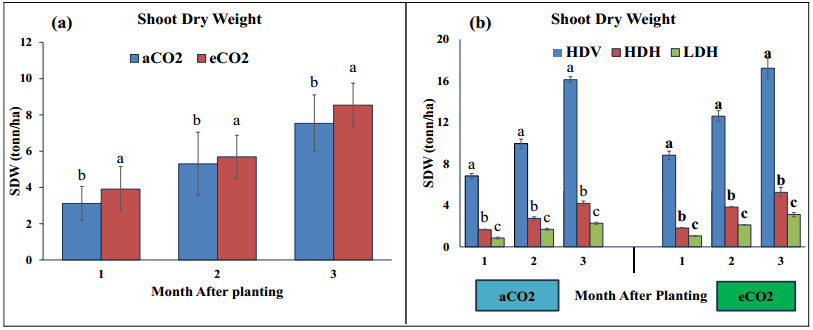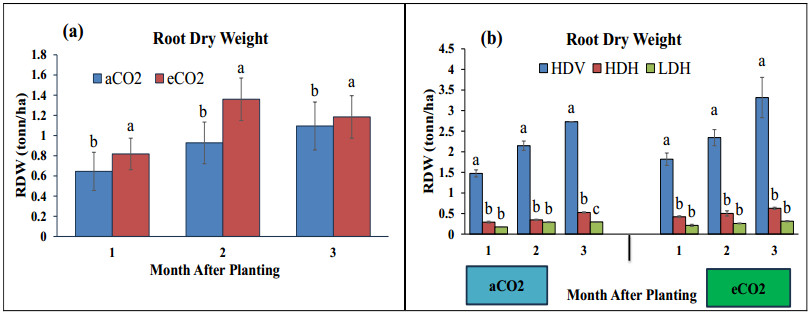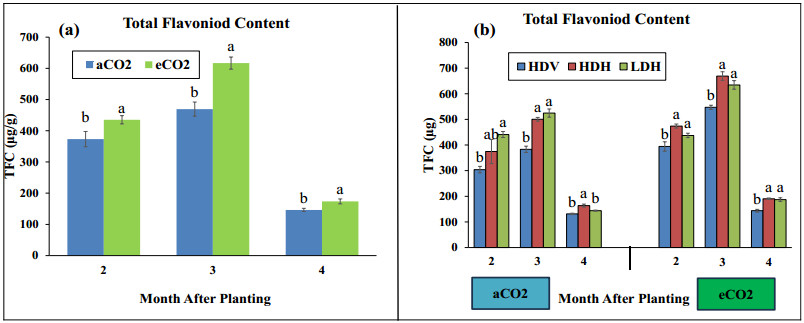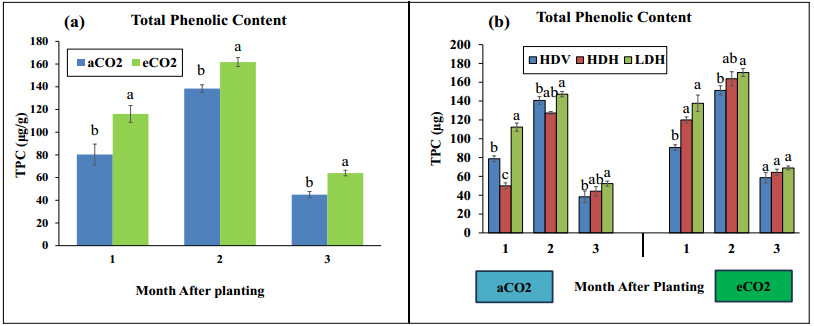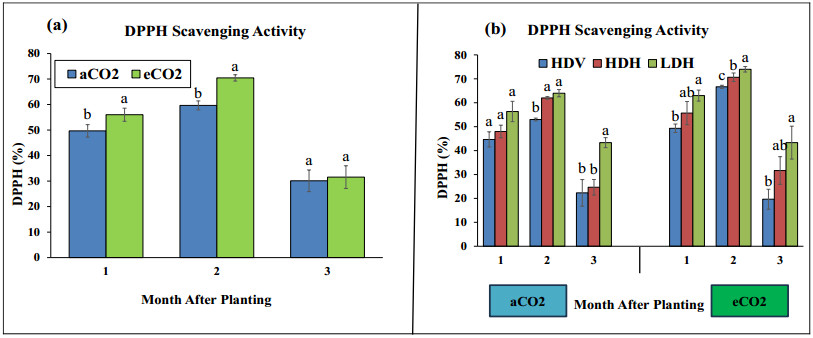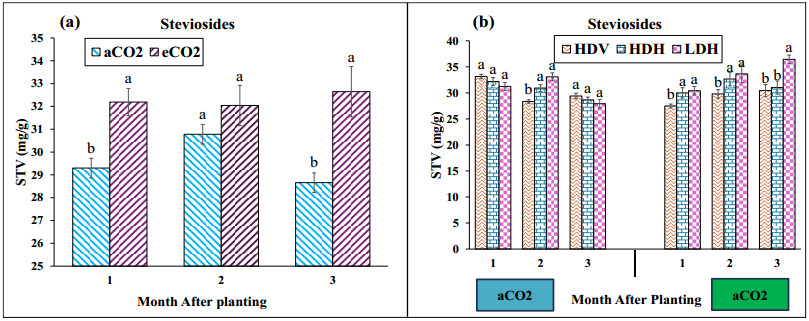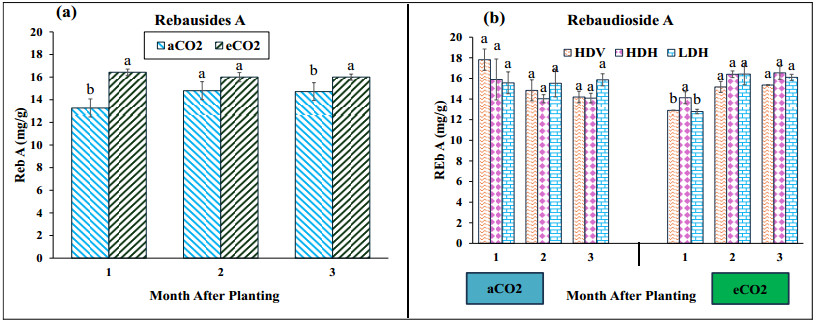1.
Introduction
Stevia rebaudiana Bertoni, is a herbaceous perennial plant species that belongs to family Asteraceae and is native to specific regions from South America, specifically to Brazil and Paraguay [1]. Currently stevia cultivation has been extended to other regions of the world including Argentina, China, Japan, Korea, Mexico, Paraguay, Indonesia, Russia, USA, Tanzania, Canada, Malaysia, and Thailand [2,3,4]. Steviol glycosides are specialized metabolites that are only produced by Stevia rebaudiana, which makes it different from other plants [5]. It has been reported that some steviol glycosides (SGs) produced by Stevia are 300-400 times sweeter than common table sugar [6,7], and these SGs are non- caloric. This does not have any effect on the body blood glucose level, making it a beneficial sweeter to be used by diabetic patients throughout the world [7,8]. Different plant organs have different concentration of SGs; however, plant leaves have been reported with the most abundant concentrations of steviosides as well as other types of SGs. Until now 30, SGs has been reported; however, steviosides have found to be the major SGs (4–13% w/w) with Rebaudioside A (2–4% w/w), Rebaudioside C (1–2% w/w) and, Dulcoside A (0.4–0.7% w/w) within concentrations in Stevia rebaudiana [3,9]
In addition to its sweetening capability, Stevia rebaudiana has been found to be anti-inflammatory, antihypertensive, anti-hyperglycemic, anti-diarrheal, anti-tumor, a diuretic, and immunomodulatory through its specialized metabolites [10,11,12]. Reactive oxygen species (ROS) generation has been linked to cause a several type of diseases including, cardiovascular disease, cancer, diabetes, arthritis, neurological disorders, and aging. ROS production can further lead to the damage of certain tissues and cause cell death. Many compounds from different plants have been identified to be ROS scavengers and have favorable pharmacological effects. Stevia leaf extracts are reported to be rich in high levels of compounds with an ROS scavenging activity (13). Numerous phenolic compounds have been identified in dry matter from stevia leaves among other constituents. That suggests that Stevia rebaudiana leaf extracts can be utilized as a natural source of antioxidants along with zero-caloric sweeteners, thus potentially benefiting the consumers' health [4,13].
The earth's climate has been drastically changed due to human activities since the pre-industrial revolution. The earth's temperature is consistently increasing thus causing global warming due to increasing concentrations of greenhouse gases such as CO2, CH4, N2O, etc. in the atmosphere, which trap the sun rays [14,15,16]. The massive generation of greenhouse gases from the quickly expanding industrial and residential sectors, have caused environmental contamination [17,18]. Environmental pollution has caused the concentration of CO2 in the atmosphere to rise to 408 (ppm), from 280 (ppm) at the beginning of the twentieth century before the industrial revolution [19]. The Intergovernmental Panel on Climate Change (IPCC) indicted that the CO2 concentration will cross 1000 (ppm) before the end of this century (19). There will be both positive and negative effects on major agriculture crops with the elevation of CO2 in the atmosphere. It has been suggested by a number of studies that elevated CO2 level will positively enhance photosynthesis, which subsequently have positive effect on plants such greater growth, higher above and belowground biomasses and higher yield [20,21,22]. On the other hand, it has been reported by several authors that elevated CO2 level can have some negative effect on plants, which may have some serious consequences on the quality of different crop species such as declines in certain nutrients along with the protein concentration, some macro-micro elements and vitamins [23,24,25]. Due to the adverse effects, it is important to understand the plant response to the elevated level of CO2 in detail.
The specialized metabolites in plants dramatically changes with both the temperature and CO2 [26,27,28]. Some biogenic volatile organic compounds are seen to show an increased production under a high temperature [28,29,30]. Generally, elevated CO2 level enhances the biosynthesis of phenolic compounds in plants; however, the response is specific from species to species [31,32]. The rate of photosynthesis in the plants is mainly controlled by two biochemical process: carboxylation and oxygenation [33]. In addition to the increasing RuBisCO activity to enhance photosynthesis, elevated atmospheric CO2 level also change partitioning of the photoactivities for the synthesis of plant specialized metabolites. Furthermore, higher CO2 levels raise the non-structural carbohydrate concentrations, which may encourage the plants' secondary metabolism [34,35]. Abzar et al. (2024 [36]) reported that steviosides and rebaudiosides were increased under eCO2 in comparison to aCO2. However, the research was solely focused on short- and long-term CO2; none of the research was performed on different plant densities under eCO2.
In addition to environmental conditions, additional agronomic methods, such as plant density, are crucial for an increased productivity because they provide equal opportunities for plant survival and the most efficient use of other inputs. The plant density and spacing significantly affect the quality and quantity of the plant's production [37,38], as well as other important agronomic attributes of the crops. Plant spacing is a non-fiscal agronomical practice which plays a key role in determining the dimensional distribution of plants, which may affect the structure of the canopy, light interception, and efficiency in using radiation and, accordingly, crop biomass production. The ideal plant density for a crop greatly varies based on the soil's fertility and the growing region's climate [39]. Leaf photosynthesis increases with a narrow row spacing and puts down weed growth by the stifling effect as compared with broader row spacing [40]. During the growing stage of crops, when photosynthesis produces the carbohydrates for the economic product, crops should fully intercept the sun radiation to generate the largest output per unit area [41,42]. For most crops, an increased plant population generally results in a higher biological yield per unit of land area up to a specific upper limit or threshold. A Planting density beyond the limit either causes the yield to drop or to maintain its current level.
Different species perform differently to the planting density in terms of the production and the efficient utilization of the available resources [43,44]. Hence, it is critical to understand the relationship between the crops and the planting density for a better production while utilizing the resources equally. Several authors have reported that planting density/spacing significantly increases yield attributes and biomass production of dry leaves [45,46,47].
In Japan by utilizing different planting densities (40000-400000) it was found that the yield obtained from stevia leaves increased with a high-density planting (83000-111000 plants Ha−1) [48]. Taleie et al. 2012 [47] reported that the transplanting date and planting density showed significant effects on the fresh and dry weights of the leaves, and plant height, and the concentrations of phenol and flavonoid. Annual stevia crops grown under mid-hill conditions of the north-western Himalayas showed better performances in terms of the leaf dry biomass at a narrow spacing compared with a wider spacing [49]. In contrast, Kumar et al. 2014 [48] reported that different planting densities did not affect the steviol glycosides. In addition to the above finding, several studies have reported that dry leaves weight obtained from Stevia grown under wider spacing was significantly higher than plants grown in a narrow spacing [50,51]. The ideal plant density for stevia greatly varies depending on the climate and soil fertility of the growing region. The impact of an increased CO2 and plant spacing on stevia growth, steviol glycoside content (%), and biomass output has not been well studied. Stevia in Malaysia is not very popular, and its fundamental agronomy and growth requirements are not well known to most farmers and large-scale producers. Considering the potential of Stevia, the present study was planned with the objective of determining the effect of elevated CO2 levels under different planting densities on stevia growth and development under Malaysian environmental conditions.
2.
Materials and methods
2.1. Experimental site and planting materials
Glasshouse conditions were used to conduct the current experiment. The glasshouse is located Putra Agriculture Center (PAC), University Putra Malaysia (UPM), Serdang, Selangor and Tenaga National Berhad Research (GHTNBR), Kawasan Institusi Penyelidikan, Jalan Ayer Itam, Kajang, Selangor. A glasshouse with elevated CO2 levels was constructed in such a way that plants could receive a 12h photoperiod and an average photosynthetic photon flux density of 330 μmol m−2 s−1. CO2 cylinders were used to provide 99.8% pure CO2 and was continuously applied from 8:00 to 10:00 a.m. through a pressure regulator- into the fully sealed 5 m × 3.67 m greenhouse. Air sense CO2 sensors designated to each chamber were used to measure the CO2 concentrations during the CO2 exposition period. The CO2 level increased once after two weeks from 400 ppm to a maximum of 1200 ppm by adding 400 ppm each time. The greenhouse was equipped with dripped fertigation for irrigation purposes. The seedlings were prepared from stem cuttings. The seedlings with height of 7–8 cm were transferred to a medium that contain coco-peat without soil in 16 cm × 16 cm size (16 × 16) of polyethylene bags. The day and night temperatures were maintained from 27–35 ℃ and 18–21 ℃, respectively. The relative humidity was maintained from 50% to 60%. To allow for plant growth under their natural environment, the stevia plants were grown under 50–60% shade (light intensity 225 ± 50 μmol m−2 s−1) using black netting.
2.2. Experimental setup
The current experiment used a nested design with randomized complete block design (RCBD) in four blocks. A factorial (2 × 3) arrangement, representing two CO2 levels (elevated CO2 (1200 ppm) and ambient CO2 (400 ppm) with three planting densities- High Density Vertical (HDV) 78 plants/meter square, High density horizontal (HDH) 25 plants/meter square and Low density horizontal (LDH) 12 plants/meter square- was established for the experiment. Factor A (CO2) was applied across the block, while the densities were nested in Factor A (CO2) under ambient and elevated CO2 (Figure 1).
2.3. Biomass analysis
The biomass was evaluated at the 2nd, 3rd, and 4th month after planting. Plants from each block were manually cut for the biomass analysis. The plants were carefully separated from the soil to measure the plant biomass. To measure dry weight for the canopy and roots (biomass), the plants were dried in an oven at 70 ℃ for 48 hours, and the canopy and root biomasses were measured in kilograms (kg). The total shoot and root dry weight were converted into ton/ha using the undermentioned formula suggested by Garibaldi, 2012 [52]. The plant base weight was calculated and multiplied by the number of plants per meter to obtain the weight of the total plant per square meter area.
In the above formula, the biomass obtained in kg/m was divided by 1000 and multiplied by 10000 to convert into tons per hectare (t/ha).
2.4. Extraction and analysis of steviol glycosides
Healthy and fresh leaves were collected from the plants and washed under running tap water to extract the steviol glycosides. After washing, the leaves were dried in a hot air oven at 40 ℃ until they reached a consistent weight. Afterwards, a filtrate from the leaves was made, and the SGs were measured using a Waters high-performance liquid chromatography system (996 Photodiode Array Detector). For the extraction process, 10 mL of methanol was used to soak 100 mg of ground leaf sample in a hot water bath at 70 ℃ overnight to extract the steviosides and rebaudioside A then, the mixture was filtered through filter paper. N-hexane was used to help in the extraction of the fats from the sample after the filtrate dried under a low pressure. After the fat extraction process, the extract was dissolved in 10 mL of a HPLC-graded acetonitrile and water (8:2) mobile phase, and was subsequently filtered through a micro filter with a pore diameter of 0.45 m. Steviosides and Reb-A were quantified using standard samples to create standard curves. The HPLC was calibrated with steviosides and rebaudioside A standard (200,400,600,800, 1000, and 1200 μg/mL). The standards for steviosides and rebaudioside A were obtained from Wako Pure Chemical, Japan Pty. Ltd. To maintain the rest of the working conditions of the instrument, the methods from Pal et al. 2015b [53] were followed.
2.5. Determination of total phenolic content (TPC)
The total phenolic content of the plant extract was determined according to the method reported by Alothman et al. 2009 [54] using the Folin–Ciocalteu reagent with some modifications. Five grams of fresh stevia leaves were harvested from all the treatments. To remove any debris and dust, the leaves samples were washed and cleaned under running tap water. The leaves samples were ground using a mortar and pestle to make a fine powder for the samples. After making a fine powder, the samples were mixed with 20 mL of 80% methanol and covered with aluminum foil. The mixture was placed in an orbital shaker for one hour. An aqueous extract was obtained by filtering the mixture using cotton wool and was used for further analyses. A 200 μL extract was added to a 10% Folin Ciocalteu phenol regent, and the mixture was thoroughly mixed. The mixture was incubated for five minutes. After five minutes, 800 μL of a 7.5% Sodium Carbonate (Na2CO3) solution was added. The mixture was incubated for 30 minutes at room temperature under dark conditions. The absorbance of the mixture was measured at 765 nm using a spectrophotometer (Fisher Thermo Scientific, Multikan Go, UK). The measurement of total the phenolic content was repeated in triplicate. The total phenolic content was expressed as mg Gallic acid equivalents (GAE) mg/g of fresh sample by using an equation obtained from the Gallic acid calibration curve.
2.6. Determination of total flavonoid content (TFC)
The total Flavonoid content of the plant extract was measured according to colorimetric assay reported by Alothman et al. 2009 [55] with slight modifications. The extract from the leaf sample was prepared in a similar manner for TPC experiment. One mL of the extract was transferred into the test tube, and the following solutions were added to it: 0.3 mL of the sodium nitrate solution instantly, 0.3 mL of a 10% Aluminum chloride (AlCl3) at five minutes, and 2 mL of Hydroxide at 6 minutes. The final volume was made up to 10 mL by adding distilled water. Finally, the mixture was mixed thoroughly, and the absorbance was measured using a spectrophotometer (Fisher Thermo Scientific, Multikan Go, UK) at 510 nm. The results were expressed as mg quercetin equivalents (QUE) mg/g of fresh sample. All samples were analyzed in triplicate, and the results were averaged.
2.7. DPPH free radical-scavenging assay
Stevia's antioxidant capacity was studied by evaluating the free radical-scavenging effect on the 1, 1-diphenyl-2- picrylhydrazyl (DPPH) radical. The determination was assessed using the procedure reported by Sultana et al. 2008 [56] with slight modifications. Three grams of fresh samples were extracted with 25 mL of 80% ethanol using a homogenizer in an ice bath. The homogenate was centrifuged at 15,000 rpm and 4 ℃ for 20 minutes. 2850 μL of DPPH fresh working solution was added with 150 μL of the supernatant and incubated for 30 minutes in dark conditions. The absorbance of the solution was determined at 515 nm using a UV visible spectrophotometer (Fisher Thermo Scientific, Multikan Go, UK). The results were expressed as percentages of inhibition of the DPPH radical, which were calculated using the following equation:
where Abs control is the absorbance of the DPPH solution without extracts [57].
2.8. Statistical analysis
The data was expressed as the mean values based on four replicates for each treatment. An analysis of variance (ANOVA) of the SAS (9.4) was used to identify significant differences in the plant biomass, glycosides and phytochemicals among different treatments at p = 0.05. The least significant difference (LSD) test was performed to determine the differences in means among the treatments.
2.9. Ethics approval of research
Ethics approval was not required for this study, as the research only involved plant materials and did not involve any experimentation on humans or animals.
3.
Results
3.1. Biomass
As, summarized in Figure 2, the results showed that CO2 enrichment increased our stevia plant's below and above-ground biomasses throughout the growth period. The biomass-related parameters namely, shoot dry weight (SDW) and root dry weight (RDW), had assisted at the 2nd, 3rd, and 4th month after planting (MAP). In terms of the SDW, the plants under eCO2 had significantly higher values than the aCO2 treated plants. At the 2nd month the eCO2 treated plants were found with (20%) higher SDWs, than the aCO2 plants. At month three, no significant were differences seen among the aCO2 and eCO2, treated plants however the eCO2 treated plants had slightly higher values. At the 4th month, the plants under CO2 enrichment showed significantly higher value (8.53 ton/ha) than the plant under ambient CO2, (7.53 ton/ha) regardless of the different densities (Figure 2A). Under aCO2 treatment, significant differences were observed for plants under different planting densities. At second month, the highest DSW was obtained from the HDV, (6.84 ton/ha) followed by the HDH (1.65 ton/ha). The LDH produced just 0.85 ton/ha of the SDW, which was significantly lower than all of densities. Similar to the second month, the plants under different densities showed the same pattern at the 3rd, and 4th, MAP (Figure 2B). Additionally, the plants grown in the glasshouse with increased eCO2 level were found with significant differences between the different densities. The data is summarized in Figure 2B, which shows a similar trend to plants grown under the aCO2 treatment in the normal greenhouses.
Despite the different densities, RDW was seen to be significantly higher under the eCO2 as compared plants grown under aCO2 treatment. Figure 3A shows that significantly higher RDW weight values were recorded for the eCO2 treated plants compared to those plants which were grown under aCO2. For the plants with different densities under the aCO2, treatment the results were the same as RDW, which was discussed in the previous section (Figure 3B). Under the eCO2, treatment the HDV plants produced significantly higher RDWs (1.82 ton/ha) in the second month than the HDH (0.42 ton/ha) and the LDH (0.21 ton/ha). A similar trend in results was observed for the 3rd and 4th MAP (Figure 3B).
3.2. Total flavonoid and phenolic content
From the current study, it was found that the TFC in our plants significantly increased with CO2 elevation at early growth and at the maturity stage (Figure 4A). The plants under the eCO2 treatment were observed with a 17% increment in the TFC at 2nd month, a 24% increment at the 3rd MAP and a 15% at the 4th, MAP in comparison with the aCO2 treatment. However, the plants produced a higher amount in the 3rd month than in the 2nd and 4th months of growth. Under the aCO2 treatment significant differences were found with the planting densities. The data obtained at the 2nd month of growth showed that the LDH plants produced significantly higher amounts of TFC than the HDV; however, the HDH was found to be non-significant to the LDH as well as the HDV. In the 3rd month of growth, the LDH and the HDH plants produced significantly higher amounts of TFC (524 μg/g) and (500 μg/g) than the HDV (383 μg/g) however; the HDH, and LDH did not show any significant differences (Figure 4B). A similar trend was seen at the 4th MAP. The trend for the TFC under eCO2 treatment was similar to the aCO2 treatment for plants grown with different densities. However, at the 2nd month, the HDV plants were seen with the highest amount of TFC (474 μg/g), followed by the HDH (437 μg/g); no significant differences were observed with the LDH with TFC values significantly lower (394 μg/g) than the HDV and HDH. The results are summarized in Figure 4b, which shows a similar pattern to the aCO2 treatment at the 3rd and 4th MAP.
The results from the current experiment indicate that eCO2 concentrations positively enhance the TPC in the stevia plants. The results summarized in Figure 5A show that the TPC content was significantly enhanced under the eCO2 treatment, compared with aCO2 treatment on the 2nd month of growth by 31%, at the 3rd MAP by 14%, and 29% at the 4th MAP in comparison to plants grown under aCO2. However, the results also showed that the maximum TPC was produced by plants at the 3rd MAP and the minimum amount was recorded at month four, regardless of the different planting densities. The TPC was highly significant for different planting densities under the aCO2 treatment at the first month, of growth where the LDH plant was found to produce the highest TPC (112 μg/g), followed by the HDV (78 μg/g) and the HDH plants (50 μg/g). At the 3rd and 4th, MAP the HDH and LDH plants were found with slightly higher amounts (Figure 6b) but were not significantly different according to the LSD at the probability level of (≤ 0.05). Under the eCO2 treatment the LDH plants produced 137 μg/g, followed by the HDH 120 μg/g, which were significantly higher than the HDV 90 μg/g, at the 2nd month of growth. Similarly, at the 3rd MAP, the LDH plant produced higher TPC (170 μg/g), which was non-significant to the HDH (163 μg/g) but was significantly higher than the HDV (151 μg/g). After harvest in month four, no significant differences were observed for any treatment (Figure 5B).
3.3. DPPH
The results from the current study demonstrate a significant enhancement in scavenging activity against DPPH radicals in Stevia rebaudiana plants under the eCO2 condition at early growth stages. The results from Figure 8A illustrate that plants under the eCO2 condition had significantly stronger scavenging activity (56%) in comparison with plants under the aCO2 (49%) at the 2nd month; and similarly, at the 3rd month, the highest scavenging percentage was shown by the plant extract from the eCO2 treatment (70%), while the extract from plants under the aCO2, showed a 59% activity against DPPH radicals. No significant differences in scavenging activities were seen among the aCO2 and eCO2 treated plants at the 4th MAP against DPPH radicals irrespective of planting density. Under the aCO2 conditions, no significant differences were observed between plants with different densities in the 2nd month. On the 3rd and 4th month, the LDH plants were found with strongest scavenging activities against DPPH however; the HDV and HDH were found to be non-significant (Figure 6B). Additionally, the results demonstrate that after exposing the plants to eCO2 with different planting densities, the LDH plants were found with strongest antioxidants activities as compared to the HDH and HDV. However, the HDH plants had significantly higher values than the HDV at the 3rd month, of growth; at the 1st and 4th MAP, no significant differences were observed for the HVD and HDH (Figure 6B).
3.4. Glycosides
Elevated CO2 level positively enhanced the glycosides content in stevia. As shown in Figure 7A, indicate that the stevia plants have produced (8%) significantly higher steviosides at the 2nd month harvest under the eCO2 treatment in comparison to the aCO2 treatment. No significant differences were seen at the 3rd month harvest, although the amount of steviosides were slightly higher under the eCO2 treatment than the aCO2 treatment. At the 4th month harvest the eCO2 treated plants produced (32.6 mg/g) steviosides significantly higher than the plant under the aCO2 treatment (28.6 mg/g), despite differences in the planting densities. Under the aCO2 treatment no significant differences were seen for different planting densities at 2nd month; alternately at 3rd month, the LDH and HDH plants produced significantly higher amount of steviosides than the HDV; though the results for steviosides were non-significant at the final harvest on the 4th MAP, among the different planting densities (Figure 7B). Under elevated CO2 levels the highest values for the steviosides were recorded for the LDH (30.41 mg/g) which were non-significant when compared to the HDH (30 mg/g) but significantly higher than the HDV (27 mg/g) at the first month harvest. At the 3rd month, there were no significant differences between all three planting densities; however, at the final harvest after four months (Figure 7B), the LDH plants were able to produce 36.45 mg/g, of steviosides which were significantly higher than the HDH (31 mg/g) and the HDV (30mg/g).
The analysis reveals a significant increase in rebaudiosides A under the eCO2 treatment compared to the aCO2 treatment. Specifically, rebaudiosides A showed a notable increase in the second month harvest under the eCO2 treatment which was recorded (20%) higher than the aCO2 treatment. At the 3rd month, harvest no significant difference was observed between the aCO2 and eCO2 treated plants. At the final harvest on the 4th MAP, the plants exposed to eCO2 produced (16 mg/g), of rebaudiosides A which was significantly higher than the plants under aCO2 treatment (Figure 8A). Under aCO2 treatment no significant differences were seen among the different planting densities (Figure 8B). However, the plants exposed to eCO2 with different planting densities showed significant differences at the 2nd month, while the trend was same as aCO2 treatment at the 3rd and 4th month harvest. The results summarized in Figure 8B show that the LDH and HDH plants had higher values for rebaudiosides A, which were non-significant according to LSD test at the probability level of p ≤ 0.05.
4.
Discussion
It is well known that the concentration of carbon dioxide has increased over the past 50 years; within this timeframe, much research has been conducted on plant performance under eCO2; most of those findings showed that eCO2 stimulated plant growth through the CO2 fertilization effect. At the current CO2 level, the Rubisco enzyme involved in leaf photosynthesis is suboptimal [58,59]. Therefore, the CO2 enrichment in the atmosphere will benefit the plants in terms of growth and yield, specially for C3 crops [60,61], by positively enhancing the physiological and biochemical process [62,63,64]. The results from our study revealed that the eCO2 significantly increased overall plant biomass regardless of the different planting densities. The results from the current study illustrate that the shoot fresh and dry weights were significantly higher under the eCO2 treatment as compared to aCO2 treatment. Similarly, the root fresh and dry weight were also seen with significant increments under the eCO2 concentration.
However, under different planting, densities the HDV showed a higher biomass than the HDH. while the LDH was seen with lowest values. The high difference in biomass (i.e. SDW, and RDW) among the different planting densities was due to the number of plants per unit area. Ball et al. 2000 [65] showed that plants under the high density ensured an increased light interception, crop biomass, and high growth rate of crop. However, it has been confirmed that low planting densities with low yields can be caused by a small number of plants per unit of area. Thus, a decrease in the yield under low planting densities is related with the high plant numbers per unit area [66,67]. These findings may explain that why the fresh and dry biomasses were lower under the LDH than the HDV and the HDH. The results from the current study are similar to Degraaff et al. 2006 [68], where they reported that the availability of an additional photosynthate enabled most plants to grow faster under elevated CO2, with the dry matter production being increased on average by 17% for the above-ground biomass. Additionally, our results are also in line with Ainsworth et al. 2008 [62], who found 12–14% increments in the total yield for C3 crops such as wheat, rice and soybean under elevated CO2 level. Elevated CO2 levels result in the partial closure of the stomata, which increases the water use efficiency in plants; thus, can contribute to the high biomass production in plants [69]. Lamichaney et al. 2021 [70] reported that under eCO2 conditions, the total dry weight of chickpeas (C3 crop) was 28-29% higher which supports of our results from the current study.
The results showed that eCO2 has significantly affected the level of the TFC, the TPC and antioxidant activities despite differences in the planting densities. Those plants, which were exposed to elevated CO2, were seen with the highest flavonoid content throughout the growth period; similarly, the TPC was also increased with the CO2 elevation. The DPPH antioxidant activities were recorded significantly higher under the elevated CO2 in the 2nd, and 3rd, month while no significant differences were seen at the 4th month. Ibrahim et al. 2012 [71] reported an increment in plant specialized metabolites due to an enrichment in the total non-structural carbohydrate (TNC) and the total soluble sugar under eCO2 conditions. Elevated CO2 levels in the atmosphere can cause a plant to reallocate resources, which can impact many physiological processes such as alterations in the primary and secondary metabolisms. Under eCO2 conditions plants can produce more carbohydrates, which will not affect the nutrient balance in plants but also serve as a source of specialized metabolites, many of which are health-promoting phytochemicals. The reallocation of plant resources, especially to specialized metabolites, is based on the hypothesis of carbon–nutrient balance (CNB) [72]. Several reports have shown that eCO2 in the atmosphere can lead to the accretion of certain carbon-based specialized metabolites such as flavonoids and phenolic compounds in many plant species [73,74,75]. However, eCO2 is also anticipated to stimulate the production of NADPH, which means that it can improve the plants' ability to reroute NADPH to maintain a higher concentration of antioxidants, such as ascorbate and glutathione [76]. Similarly, Backer and Klaring 2016 [77], reported the accumulation of several flavonoid and other phenolic compounds in lettuce (C3 plant) under the eCO2 treatments which supports our results. On the other hand, Sallas et al. 2003 [78] reported a decline in the TPC in Norway spruce under eCO2 conditions; however, the effect of CO2 can be species specific and favor C3 plants which produce high specialized metabolites under high atmospheric carbon dioxide. Our results are also in line with the finding from Dong et al. 2018 [79], where they reported that eCO2 (1200 ppm) increased the of total antioxidant capacity, the TPC, and the TFC by 59%, 8.9%, and 45.5% respectively.
The photosynthetic rate and intake of the carbon capacity of various plants leaf sections are affected by the plant density because the plant density impacts the nutritional status and light distribution characteristics of plants. The primary active ingredients in medicinal plants are specialized metabolites. The population structure of plants is primarily impacted by the planting density, which enhances competition between individuals for nutrients, light, and water. The plant yield and quality are impacted by these internal environmental factors, which are dependent on the planting density [66,80]. Wu et al. 2020 [80] reported that the 1450 plant m−2 of perilla sprouts produced the highest TFC compared with 1887 and 2325 plants m-2, which are similar to our results for the highest flavonoids under the LDH. In term of the highest phenol content and antioxidant activity under the LDH are in agreement with Yuan et al. 2018 [81], who reported that tobacco plants (Nicotiana tabacum) grown at lower densities had increased levels of alkaloids such as nicotine, which are specialized metabolites involved in plant defense. According to Cheynier et al. 2013 [82], plants develop a vast amount of phenolic specialized metabolites, which are essential to their interactions with the environment. In contrast to our results Kaluzewicz et al. 2017 [83], reported that higher plant densities led to increased concentrations of phenolic compounds. However, a study by Riad et al. 2009 [84] suggested that no significant effect was seen among the planting density on the TPC, in cabbage. Reilly et al. 2014 [85] reported similar results for broccoli. In our current study, the LDH were found with the highest phenolic content. On the other hand, the HDV farming showed lower phenolic content than the HDH, which may explain why there was no effect of the planting density on TPC.
Steviol glycosides are the key components that make stevia different from other crops. Steviosides and rebaudiosides are reported to be the most abundant glycosides by percentage, especially in leaves as compared to other parts of the plant. From our current investigation, we found that both steviosides and rebaudiosides A were significantly increased with increased CO2 concentrations, despite differences in the planting densities. At the final harvest, the CO2 treated plants had 12% increment in steviosides as compared to the non-treated plants. However, the plants under the eCO2 treatment, showed a maximum amount of the steviosides at the 4th month, while plants under the aCO2 treatment were seen with maximum values at the 3rd MAP. Dong et al. 2018 [79] reported that eCO2 promoted soluble sugar in vegetables due increased CO2 fixation under eCO2 promoting triose phosphate in the leaves, which can be further transformed to other sugar such as glucose, sucrose, and fructose. As we mentioned in the earlier section and is supported by Booker, 2000 [86], that eCO2 increases the concentration of the total non-structural carbohydrates which further stimulates the production of specialized metabolites. The meta-analysis from Dong et al. 2018 [79] showed that the concentrations of glucose, fructose, sucrose, and total the soluble sugar were increased 13.2%, 14.2%, 3.7%, and by 17.5%, respectively in terms of all vegetables which supports our results for stevia being a C3 plant; C3 crops, show similar trends, even though there is lack of studies on steviosides and rebaudiosides under eCO2. Moreover, our results are in line with Wang and Bunce, 2004 [87], where they reported that eCO2 (950 ppm) increased total soluble sugar in the strawberry fruits by 20% as compared to 350 (ppm). Our results are also similar to El-Azem 2013 [88], who found a 13% increment in radishes and a 20% increment in turnips under the eCO2 treatment (1000 ppm) in comparison to the aCO2 (400 ppm).
The planting density does not significantly affect steviosides under the aCO2 treatment. However, under the eCO2 treatment vertical farming showed the lowest values compared to horizontal farming. The difference in steviosides under the eCO2 treatment was because of the farming techniques rather than the density, as no significant differences were seen in the HDH and the LDH. Overall, no significant differences were observed for rebaudiosides A under the different planting densities under the aCO2 as well as eCO2 treatment. Kumar et al. 2014 [48], reported no significant differences for different planting densities for steviosides and rebaudiosides. Our results also show similarities to Benhmimou et al. 2017 [89], who reported that no significant differences were seen in the total steviol glycoside content of dry leaves under different planting densities. Gomes et al. 2018 [90] reported that a low plant density (3, 3333 plants ha−1), promoted the highest content of rebaudioside A and steviosides at the beginning of flowering over high-density planting (1, 66 667 plants ha−1) which show similarities to the increment of steviosides under low density planting than high density vertical planting.
Controlling the CO2 procedures can show a positive effect in optimizing the plant growth and yield in commercial crop production. By specifically regulating the CO2 concentrations in controlled environments, such as greenhouses or vertical farms, there is a possibility to enhance the CO2 fertilization effect observed in C3 crops like Stevia. The efficiency of photosynthesis can be greatly promoted by this approach, which leads to a higher biomass accumulation and an improved plant metabolism, as demonstrated in the current study. In larger-scale crop production, utilizing CO2 enrichment could potentially increase the overall crop productivity, thus, allowing farmers to achieve higher yields while maintaining the resource efficiency. Moreover, other environmental factors, such as light and temperature, can be integrated with CO2, to create optimal conditions for plant growth, thus, enhancing both the quantity and quality of harvests. If broadly adopted, this technique could extensively contribute to the future of sustainable agriculture by increasing production and reducing the environmental footprint of crop farming.
5.
Conclusions
Form our findings we conclude that eCO2 significantly increased the biomass and secondary metabolism in stevia plants regardless of different densities throughout the growth period. However, the HDH farming (25 plants m2), performed better than the HDV (78 plants m2) and showed no significant differences to the LDH (12 plants m2) based on individual plant performances, which is suggested for stevia planting under Malaysian weather conditions. Additionally, the application of CO2 elevation control procedures could be considered in commercial crop production on a large scale to further boost the plant growth and yield. The regulation CO2 level may possibly enhance the photosynthesis process and biomass accumulation, which is favorable to increase the crop productivity, specifically in environments with controlled conditions.
Use of AI tools declaration
The authors declare they have not used Artificial Intelligence (AI) tools in the creation of this article.
Acknowledgment
The work was partially supported and funded by TNB Research Sdn. Bhd. The authors are also thankful to all the staff members of Ladang 15, Faculty of Agriculture, University Putra Malaysia staff members for their support throughout the project.
Conflict of interest
The authors declare no conflict of interest.
Author contributions
A Abzar, made a significant contribution to the work reported, including conception, study design, execution, acquisition of data, analysis and interpretation like all areas. Siti Zaharah Sakimin, made a significant contribution to work reported, including conception, study design, execution, acquisition of data, analysis and interpretation like all areas and supervised the project. Hawa ZE Jaafar and Nor Elliza Tajidin made a significant contribution to the work analysis and study design and co-supervised the project. Arsalan Ishaque Made a significant contribution to the writing, reviewing and editing.










 DownLoad:
DownLoad:
